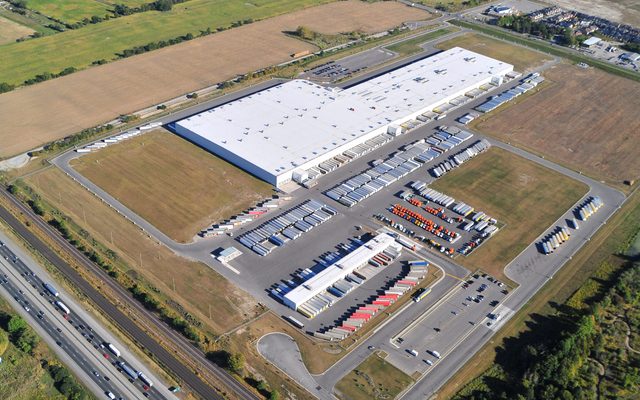- What A federal housing plan proposed by the Carney government could double housing construction
- Why The plan seeks to incentivize development and reduce costs and barriers to building
- What next Industry advocates want lower development charges and more infrastructure funding
The Liberal Party of Canada’s election victory paves the way for the Carney government to implement a new national housing policy aimed at boosting supply. During his campaign, Prime Minister Mark Carney pledged to double the output of domestic housing construction to 500,000 homes annually.
Beyond raw targets, industry pros say that for any national housing plan to be successful, it needs to tackle existing barriers constraining development, such as high development charges and complex government regulatory requirements. The construction industry, meanwhile, wants more federal funding for essential infrastructure needed to support new builds.
Proposed measures, such as the reintroduction of tax credits and other waivers, are a start. But industry pros want to see more ambition in incentivizing housing development at the scale needed to reverse the housing crunch.
“I don’t see the intervention being enough at the moment to make it compelling for the industry to jump back into building because right now, the economics of housing development are money-losing for most practitioners,” Daniel Foch, broker and chief real estate officer for Valery Real Estate, told Green Street News.
Cutting development charges
The Carney plan commits to slashing existing municipal development charges in half for multifamily rental housing for five years. In return for reducing such fees, municipalities would be compensated for the lost revenue.
Development charges are a central concern for developers, particularly for those in the Greater Toronto Area — the country’s largest housing market — which has the highest level of municipal fees for housing construction.
But without the legislative power to compel municipalities to freeze or chop development charges – provinces regulate cities, not the federal government – it’s important for the federal government to work with its provincial counterparts, market pros say, to come up with the funding that would properly incentivize cities to forgo the lucrative revenue streams created through high development charges.
“The challenge is if the province is unwilling [to partner with the federal government on reducing development charges], a lot of these homes that the Carney government is counting on just won’t get built because it won’t be economical [for builders],” Mike Moffatt, economist and founding director of the Missing Middle Initiative at the University of Ottawa told Green Street News.
Foch thinks a federal housing plan should follow the direction of Toronto and other municipalities that have created flexibility for development by allowing fees to be paid following project approvals rather than at the start of an application process.
“That’s just one of those incremental changes around tax structure that has made a lot more housing get built,” he said.
Speeding up development timelines
Measures proposed by the Carney housing plan to speed up development include permitting builders to apply for multiple property approvals at one time as well as streamlining existing regulations on the books.
Pros say not only would expediting approvals improve housing delivery, it would also save builders cash in the long run by reducing the time needed for financing land and other capital costs.
Additional cost savings could also be realized by encouraging municipal planning agencies to employ artificial intelligence and other technological innovations to bulk approve planning approvals.
Measures to boost housing affordability
The Carney plan outlines measures intended to address housing affordability. They include waiving tax liabilities for buildings sold to be converted into rental housing, and waiving taxes paid for home purchases by first-time buyers.
Also planned is the establishment of a new federal agency, Build Canada Homes, which will be tasked with developing housing on publicly owned lands by partnering with private builders.
“They would be almost acting more like a private-sector developer,” Moffatt said.
Bringing back MURB
The Carney government intends to reinstate a tax measure last seen over 40 years ago to spur multifamily development.
The Multiple Unit Rental Building program allowed individuals to claim depreciating building costs against their income taxes to incentivize development. If reintroduced by the federal government, it promises to enable the development of tens of thousands of new rental apartment units across the country, as was the case between 1974 and 1982.
MURB wouldn’t necessarily be of much value to high-density development, but it could benefit developers of “missing middle” housing such as townhouses and small apartment buildings, Moffatt said.
Foch said bringing back the program would not have any noticeable impact for bigger players.
“I don’t think it’s significantly improving the world for large developers since you can’t really deduct a billion-dollar building … because the cost would be too high,” he said.
Critical infrastructure funding
A 2024 federal commitment of $6bn is in place to aid provinces and cities with building new water mains, sewer pipes and other critical housing infrastructure.
Industry advocacy groups such as the Canadian Construction Association have called on the new government to provide a higher level of funding to address a national infrastructure deficit it says is 100 times the amount currently pledged.
The CCA has also called for an additional $5bn of funding of essential infrastructure such as ports, airports and highways to support development.
“The industry was facing challenges before the current crisis and will continue to face these same hurdles if systemic inefficiencies and chronic underinvestment are not addressed,” the group said.




